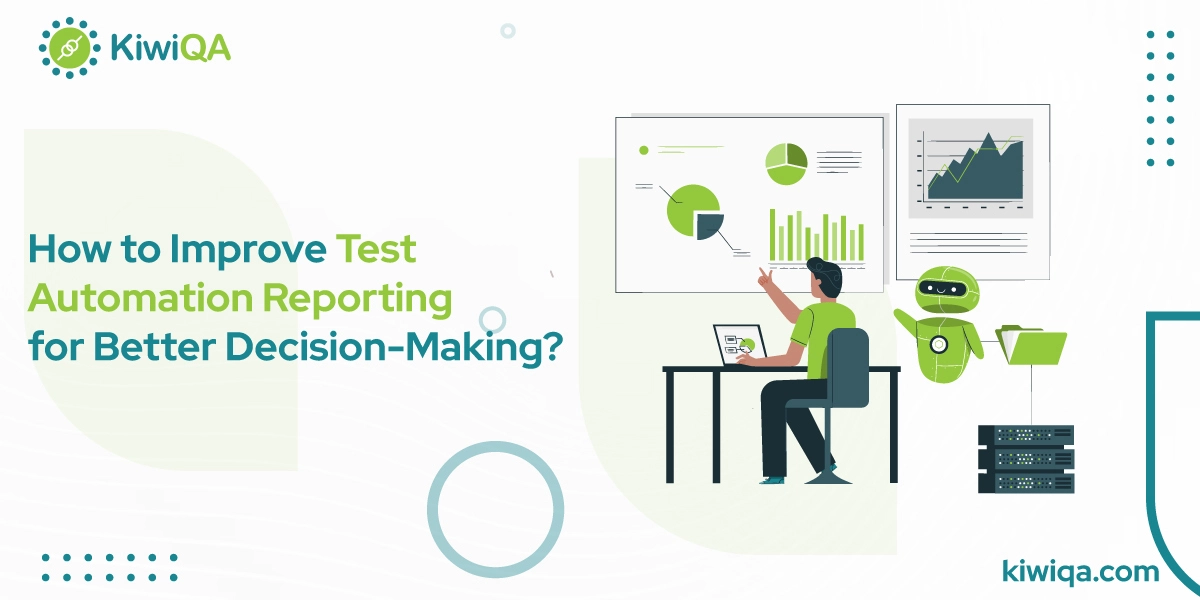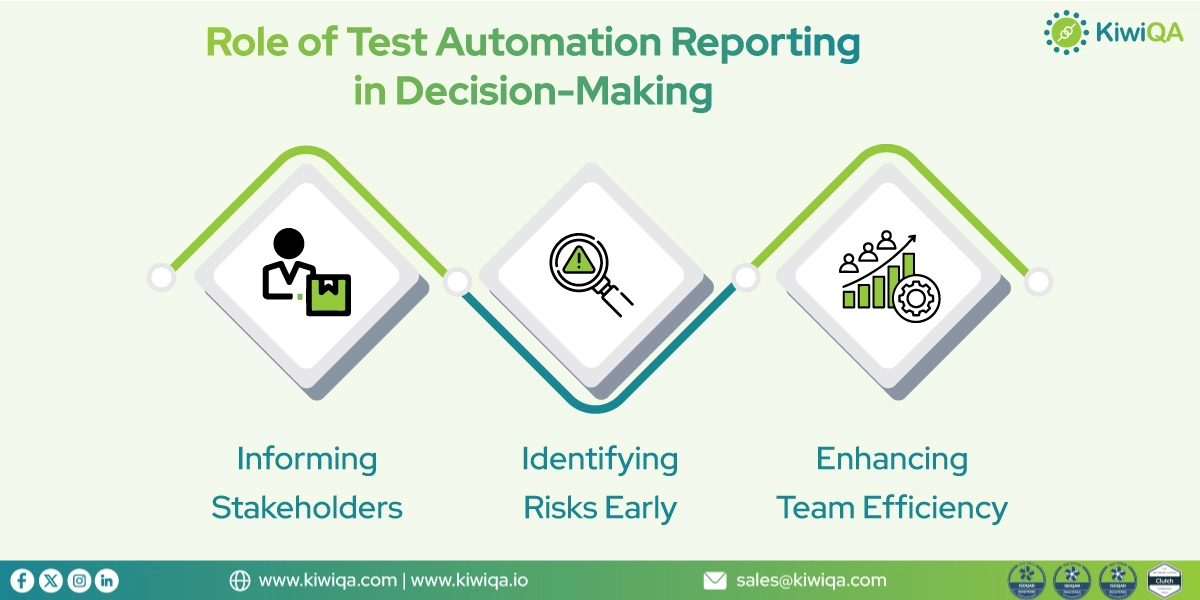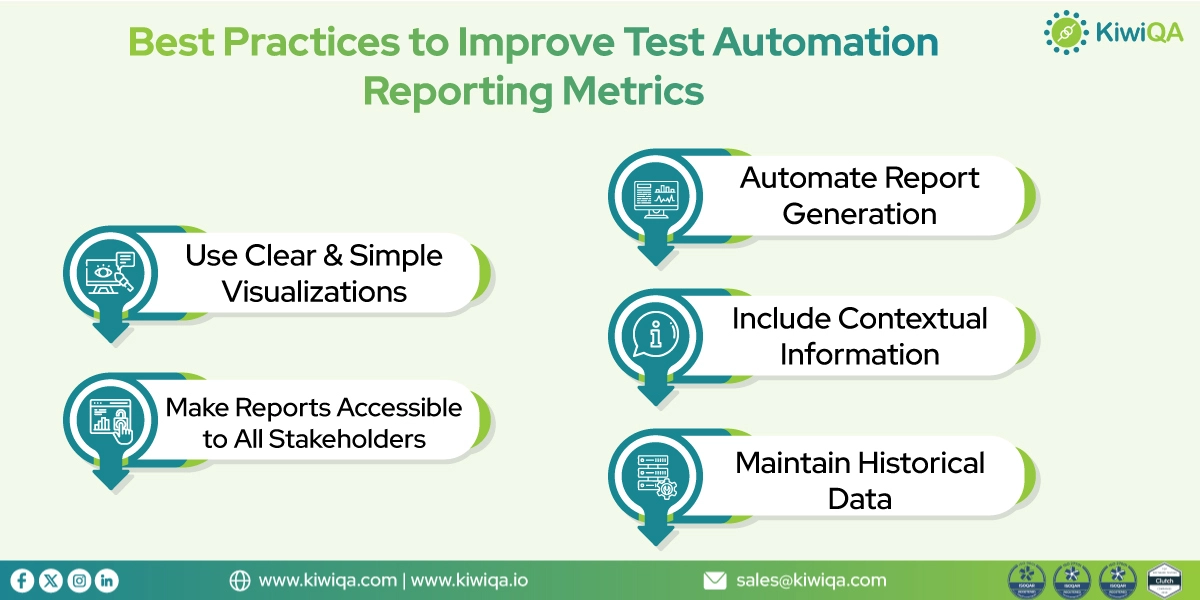Test reporting and automation are important because of the high demand for software solutions that we see in the market today. The software helps in completing many high throughput tasks that were otherwise manual and took a lot of time. As companies depend more and more on the digital ecosystem, the use of custom software has gained importance.
To understand the need for software testing and reporting automation, you need to first know the scope of software development in today’s time. For example, nearly 69% of the currently running companies have embraced the use of cloud solutions. This has only been possible with the help of software development companies.
Such solutions need thorough testing and test automation reporting. The use of test automation tools can help in creating the flow for software development and improvement in a better way. With the rapid pace of software development, the testing and reporting pace also needs to be high.
Without the use of reporting test automation, the reports can be open to human error as there is manual data collection. The manual data collection process also reduces the pace of software test and reporting. The reports are not the most insightful as there is no real-time insight or minute details about the software testing cycle.
The Role of Test Automation Reporting in Decision-Making
QA Automation Testing Services create reports that are highly accurate and detailed. The logging and reporting in test automation are much smoother and simpler to complete. The tools for reporting in the automation phase are designed to ensure that the testers get assistance in creating the QA test report for the software.
Reporting test automation makes the test reports highly scalable and customized to meet the expectations of your client. Such technology creates complex test reports through different versions of the software and reduces the room for manual errors.
1. Informing Stakeholders
The use of a test automation reporting dashboard helps create a transparent and easy-to-interpret report stack for technical and non-technical stakeholders. Even for teammates who are at beginner level or do not have any experience in software development, the software testing report is easy to understand. The reporting automation test results come in a detailed and easy-to-understand format from which one can get insights with the help of the test automation reporting dashboard.
2. Identifying Risks Early
The test automation reporting dashboard shows you the test automation reporting metrics that make it easy for the tester to know in detail about the risks present in the software. The test automation reporting dashboard ensures that the tester can look at the metrics and analyze them with the tools in the testing automation suites.
The report generated in this manner has all the important insights related to the issues and risks present. Moreover, it also gives suggestions on the actions that the development needs to take to mitigate the risks. The testing team can share the reporting automation test results and give simpler suggestions to the development team. With early and detailed risk assessment, future issues with the software can also be avoided to a great extent.
3. Enhancing Team Efficiency
The report that the test cycle creates is a major detail that the development team and the software testing team share with each other. A major part of the communication that is crucial for the software testing services and development team is the report of the test cycle results. This is because it has all the output of the testing cycle, and it determines the path that the project takes in the next phase.
Therefore, reporting test automation is important as it can improve the nature of the report and make communication between the teams more efficient. The feedback is more effective and easier to interpret with the reports automated. The speed of communication also improves as the pace of reporting increases. The use of a test automation reporting dashboard makes it possible for the two teams to take up real-time communication.
Also Read : 10 Best Automation Tools for Salesforce Testing In 2024
What Are the Common Pitfalls in Reporting Test Automation?
Automation testing services should use test automation reporting for an improved testing process and easy reporting. However, there are some areas in which challenges still exist around test reporting and automation. The results of test automation come with some drawbacks that need to be avoided for useful and impactful reports.
1. Overly Technical Reports
Sometimes, test automation reporting creates reports that are very complex and technical in nature. In an attempt to capture all the details of the software testing cycle, the report includes a lot of technical details that might not be easy for non-technical teammates to read and understand. For example, if you are creating management software for a firm, the senior manager will not understand the back-end details of the software. Therefore, it is important to establish test automation reporting metrics that simplify the data for non-technical members.
2. Information Overload
In the attempt to include minute details, the reporting automation test results might include too much information that was not necessary otherwise. The professionals want to look at test insights, but they do not want overcomplicated, overloaded reports. The report should be concise and have only the important information.
3. Lack of Context or Metrics
A test automation tool might not be set on the right metrics and might not have worked with the right kind of data to create the report. While creating real-time test insights, the tool might not be linked with historical data, which can lead to its failure in a contextual manner. The lack of previous data can reduce the efficiency of the tools and the test automation reports. However, with the use of AI and deep learning-enabled testing tools, this drawback can be addressed.
Key Factors to Include in Test Automation Reporting Metrics
The metrics for test reporting and automation can differ based on the types of automation testing done for the software. Here is an idea of the type of test automation reporting metrics included in different kinds of automation tests and the scope of the software.
1. Test Case Execution Summary
The logging and reporting in test automation should focus on creating the test case execution summary that includes details about the number of tests run and the test result classification based on the tests passed, failed, and other main criteria. The overall execution summary will give someone an idea about the test cases and a holistic view of the test results.
2. Defect and Failure Trends
Test failure is an important metric to take into consideration as it points towards a problem in the software. The software should be tested by different people, and the failure rate should be recorded. The failure for different aspects of the test cases should be recorded to predict the defect and failure trend. The defects in the test cases should also be recorded so that the test parameters can be tweaked and improved with time.
3. Test Coverage
The automated test reports should also show the extent of test coverage with the help of tangible numbers. The automated test reports should focus on estimating the feature coverage, overall coverage, and technical coverage of the tests so that the testing team knows which areas to focus on in the next testing cycle. High and complete test coverage is important in this aspect.
4. Performance and Stability Metrics
The test automation reporting results should also focus on showing the pace and stability of the tests, showing how quickly the software was tested. This gives an idea of the integrity of the testing environment as well as the high-performance quality of the software. Ideally, software should be stable through the different tests it is put through. The testing environment should also be very stable so that the processes go smoothly.
5. ROI and Automation Efficiency
Before you choose reporting test automation, it is important to compare the efficiency of automation and manual tests. Manual and automation tests should be checked for the ROI they give before switching to automated test reports. If the demand for the software is low and you cannot recover the cost of automation testing tools quickly with the revenue you generate, then it is better to hire expert manual testers. However, a testing automation tool with a low budget is also possible as the first step.
Also Read : 2024’s Best API Automation Testing Tools for Success
Best Practices to Improve Test Automation Reporting Metrics
1. Use Clear and Simple Visualizations
To make the test reporting and automation results easy to understand and interpret, use a tool that has an interactive dashboard that can incorporate visual representations, graphs, pie charts, and data maps to create a simple understanding of the report. This creates the outlook from which developers, testers, and even non-technical members can get insights. The visual components ensure that the data in the report is easily organized and can be interpreted. For real-time updates, color codes and highlights are included for easy localization.
2. Make Reports Accessible to All Stakeholders
For the easy sharing and accessibility of a report generated by automated testing tools, it is important to integrate the report dashboard with one-click sharing options, which can convert the digital data into Excel format, PDF, doc, or even HTML. This creates an adaptable report which can be downloaded to different devices and for different purposes. The report should have an insightful summary and high-level detail so that all the team members can understand the impact of the results.
3. Automate Report Generation
To increase the level of automation in the testing cycle, it is important to bring automation into the reports. The reporting mechanism should be part of the testing cycle through continuous integration tools that make it a part of the continuous testing process. The tests get automatically scheduled so that they can go on smoothly and create accurate results with minimal intervention from human testers. This streamlines the testing workflow and creates scope for a more productive team.
4. Include Contextual Information
When the testing professionals create a test case to run a test on the software, they need to include the metrics that also show the failure rate and reason. The details around the test, like the test case parameters, defects, and environmental factors that led to the failure of the test, establish the context of the final result and show the error to the software testing and development. From the details and context, the developers can understand the issue underlying the software that led to the failure, and then the software developers can improve to eliminate the error from the software.
5. Maintain Historical Data
When developing the test cases that exist around the software and creating an environment for the test, the reporting mechanism should also be linked with the historical data and previous test records so that future decisions can be taken properly and, in a data-driven manner. The linking of historical data and analytical decisions can also improve the stability and accuracy of the test cases for the software product.
Ready to Automate? Start Your Free Test Automation Consultation Today!
Along with the use of test automation tools, it is also important for a modern software development team to create a strong and interactive reporting mechanism. The metrics and parameters of the test cases and the layout of the report support the final output of the software tests. It is important to create detailed, easy-to-understand, and graphical test reports that can be generated within minutes. A good test automation company also streamlines and automates the reporting mechanism so that the client gets an accurate and well-organized report of the software quality analysis.










